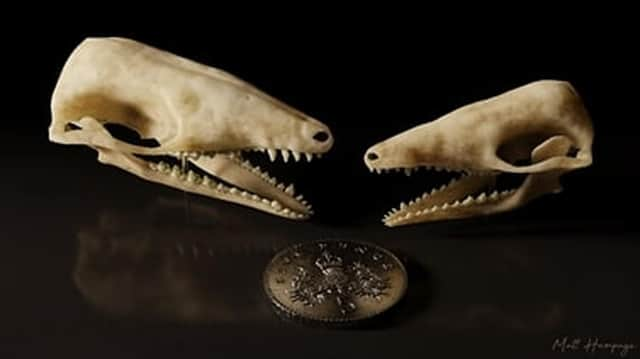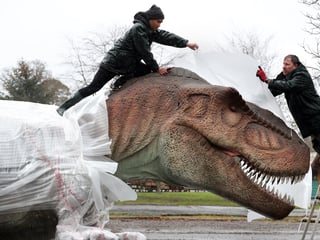'Jurassic mouse' aged 166 million years old found on Scottish island


Borealestes cuillinensis was identified after fossilised remains of two tiny skulls were found on the Strathaird peninsula in the south of Skye.
The name was given to the mouse-like mammal given that the little creature’s jagged teeth reminded researchers of the Cuillin Ridge.
Advertisement
Hide AdAdvertisement
Hide AdThe specimens date to the Middle Jurassic period and are around 166 million years old.
Lead author of the study, Dr Elsa Panciroli, an Associate Researcher at National Museums Scotland and Research Fellow at the Oxford University Museum of Natural History, said: “These two skulls may be tiny in size, but their significance is huge. They belong to the most complete early mammal skeletons described so far from the UK, and they offer a unique insight into the early development of mammal life.
The skulls are part of the collections of National Museums Scotland, and are described in a new paper published in The Zoological Journal of the Linnean Society.
The two skulls were found more than 40 years apart, the second being discovered on Skye in 2018. Originally thought to be the same species, further research found that the later skull was a new species entirely.
Dr Elsa Panciroli said: “The first was found back in 1972, and was named Borealestes serendipitus.
" Borealestes was the first mammal from the time of dinosaurs ever found in Scotland. We found the second fossil in 2018 on Skye. We thought it was the same species, but realised it was a new one after CT scanning it, based on the shape of the upper teeth.”
Borealestes cuillinensis was a small, mouse-like animal that lived alongside the dinosaurs. It had a long snout and its body was covered in fur. It ate insects, and lived on the margins of the freshwater lagoons that covered Skye at that time.
Around the time the time the mammal roamed the land, Skye was was part of the huge landmass of Laurentia, which also included North America. Footprint evidence that matches the dinosaur species discovered on Skye have also been found in Wyoming.
Advertisement
Hide AdAdvertisement
Hide AdThe areas on Skye where dinosaur remains and footprints are found today were once swampland and part of an estuary system.
Numerous other fossils have been found on the Strathaird Peninsula, including amphibians and dinosaurs which would have lived alongside Borealestes.
Dr Nick Fraser, Keeper of Natural Sciences at National Museums Scotland and co-author of the study, said: “When we think of the Jurassic period, most of us will automatically think of dinosaurs, and that’s probably especially true of Skye, where there have been some terrific dinosaur finds. However, the development of mammal life, including ourselves, goes back to this time with lots of new groups and lineages emerging.
“Aside from describing a new species, which is always exciting, this is an important piece of research because Jurassic mammals are frequently only known by their teeth and isolated fragments. This paper is really significant because it describes skull material which is really rare. As such it will be widely cited in the future on many publications dealing with Jurassic mammals from anywhere in the world.”
